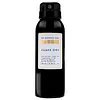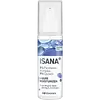What's inside
What's inside
 Key Ingredients
Key Ingredients

 Benefits
Benefits

 Concerns
Concerns

No concerns
 Ingredients Side-by-side
Ingredients Side-by-side

Water
Skin ConditioningAlcohol Denat.
AntimicrobialPvp
Emulsion StabilisingGlycereth-26
HumectantGlycerin
HumectantPropanediol
SolventAloe Barbadensis Leaf Extract
EmollientCucumis Sativus Fruit Extract
EmollientTulipa Gesneriana Flower Extract
Skin ConditioningPolysorbate 20
EmulsifyingHydroxyacetophenone
AntioxidantEthylhexylglycerin
Skin ConditioningPentylene Glycol
Skin ConditioningMethyl Diisopropyl Propionamide
MaskingPanthenol
Skin ConditioningMaltodextrin
AbsorbentPhenoxyethanol
PreservativeWater, Alcohol Denat., Pvp, Glycereth-26, Glycerin, Propanediol, Aloe Barbadensis Leaf Extract, Cucumis Sativus Fruit Extract, Tulipa Gesneriana Flower Extract, Polysorbate 20, Hydroxyacetophenone, Ethylhexylglycerin, Pentylene Glycol, Methyl Diisopropyl Propionamide, Panthenol, Maltodextrin, Phenoxyethanol
Water
Skin ConditioningGlycerin
HumectantPanthenol
Skin ConditioningBetaine
HumectantSorbitol
HumectantAloe Barbadensis Leaf Juice
Skin ConditioningNiacinamide
SmoothingAllantoin
Skin ConditioningEctoin
Skin ConditioningLithothamnion Calcareum Extract
Skin ConditioningSodium Hyaluronate
HumectantXanthan Gum
EmulsifyingPentylene Glycol
Skin ConditioningCalcium Chloride
AstringentEthylhexylglycerin
Skin ConditioningAmylopectin
Gellan Gum
Pantolactone
HumectantLactic Acid
BufferingPhospholipids
Skin ConditioningCitric Acid
BufferingPotassium Sorbate
PreservativeSodium Benzoate
MaskingSphingolipids
EmollientSodium Citrate
BufferingTocopherol
AntioxidantPhenoxyethanol
PreservativeP-Anisic Acid
MaskingWater, Glycerin, Panthenol, Betaine, Sorbitol, Aloe Barbadensis Leaf Juice, Niacinamide, Allantoin, Ectoin, Lithothamnion Calcareum Extract, Sodium Hyaluronate, Xanthan Gum, Pentylene Glycol, Calcium Chloride, Ethylhexylglycerin, Amylopectin, Gellan Gum, Pantolactone, Lactic Acid, Phospholipids, Citric Acid, Potassium Sorbate, Sodium Benzoate, Sphingolipids, Sodium Citrate, Tocopherol, Phenoxyethanol, P-Anisic Acid
 Reviews
Reviews

Ingredients Explained
These ingredients are found in both products.
Ingredients higher up in an ingredient list are typically present in a larger amount.
Ethylhexylglycerin (we can't pronounce this either) is commonly used as a preservative and skin softener. It is derived from glyceryl.
You might see Ethylhexylglycerin often paired with other preservatives such as phenoxyethanol. Ethylhexylglycerin has been found to increase the effectiveness of these other preservatives.
Glycerin is already naturally found in your skin. It helps moisturize and protect your skin.
A study from 2016 found glycerin to be more effective as a humectant than AHAs and hyaluronic acid.
As a humectant, it helps the skin stay hydrated by pulling moisture to your skin. The low molecular weight of glycerin allows it to pull moisture into the deeper layers of your skin.
Hydrated skin improves your skin barrier; Your skin barrier helps protect against irritants and bacteria.
Glycerin has also been found to have antimicrobial and antiviral properties. Due to these properties, glycerin is often used in wound and burn treatments.
In cosmetics, glycerin is usually derived from plants such as soybean or palm. However, it can also be sourced from animals, such as tallow or animal fat.
This ingredient is organic, colorless, odorless, and non-toxic.
Glycerin is the name for this ingredient in American English. British English uses Glycerol/Glycerine.
Learn more about GlycerinPanthenol is a common ingredient that helps hydrate and soothe the skin. It is found naturally in our skin and hair.
There are two forms of panthenol: D and L.
D-panthenol is also known as dexpanthenol. Most cosmetics use dexpanthenol or a mixture of D and L-panthenol.
Panthenol is famous due to its ability to go deeper into the skin's layers. Using this ingredient has numerous pros (and no cons):
Like hyaluronic acid, panthenol is a humectant. Humectants are able to bind and hold large amounts of water to keep skin hydrated.
This ingredient works well for wound healing. It works by increasing tissue in the wound and helps close open wounds.
Once oxidized, panthenol converts to pantothenic acid. Panthothenic acid is found in all living cells.
This ingredient is also referred to as pro-vitamin B5.
Learn more about PanthenolPentylene glycol is typically used within a product to thicken it. It also adds a smooth, soft, and moisturizing feel to the product. It is naturally found in plants such as sugar beets.
The hydrophilic trait of Pentylene Glycol makes it a humectant. As a humectant, Pentylene Glycol helps draw moisture from the air to your skin. This can help keep your skin hydrated.
This property also makes Pentylene Glycol a great texture enhancer. It can also help thicken or stabilize a product.
Pentylene Glycol also acts as a mild preservative and helps to keep a product microbe-free.
Some people may experience mild eye and skin irritation from Pentylene Glycol. We always recommend speaking with a professional about using this ingredient in your routine.
Pentylene Glycol has a low molecular weight and is part of the 1,2-glycol family.
Learn more about Pentylene GlycolPhenoxyethanol is a preservative that has germicide, antimicrobial, and aromatic properties. Studies show that phenoxyethanol can prevent microbial growth. By itself, it has a scent that is similar to that of a rose.
It's often used in formulations along with Caprylyl Glycol to preserve the shelf life of products.
Water. It's the most common cosmetic ingredient of all. You'll usually see it at the top of ingredient lists, meaning that it makes up the largest part of the product.
So why is it so popular? Water most often acts as a solvent - this means that it helps dissolve other ingredients into the formulation.
You'll also recognize water as that liquid we all need to stay alive. If you see this, drink a glass of water. Stay hydrated!
Learn more about Water